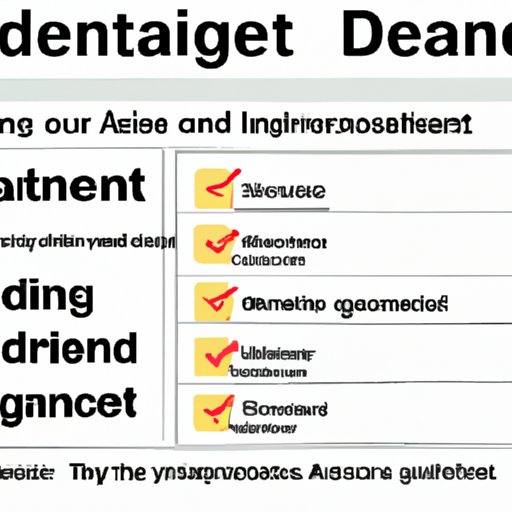Introduction
Identifying an audience in writing is a critical step in any written communication project. Whether creating content for a website, crafting a speech, or producing a report, it’s essential to take the time to understand who will be reading the material, and tailor the content accordingly. This article provides a comprehensive guide to identifying audience in writing, outlining the steps necessary to ensure that the message resonates with the intended target.
Analyze the Topic
The first step in identifying audience in writing is to analyze the topic. In order to write effectively for a particular group, it’s important to have a thorough understanding of the subject matter. This means taking the time to research the topic thoroughly, and familiarizing yourself with the key concepts related to the subject. Once you have a solid grasp on the topic, it’s easier to recognize how it relates to the intended audience.
Research Your Audience
Once you’ve analyzed the topic, it’s time to research your audience. This is an important step in identifying the needs of the readers, so it’s essential to gather as much information as possible about the intended audience. Gather demographic data such as age, gender, location, and education level. If possible, create a profile of the average reader by gathering data from a variety of sources. Utilize surveys, polls, focus groups, and other resources to accurately gauge the needs and interests of the intended audience.
Consider Your Medium
The next step in identifying audience in writing is to consider your medium. Different platforms require different approaches, and the same message can be interpreted differently depending on the medium. For example, a tweet may not be suitable for a lengthy explanation, while a web page can provide more detailed information. It’s important to evaluate the best platform for communication, and understand the limitations of each medium.
Use Language Appropriately
Once you’ve identified the best medium for communication, it’s time to craft content that resonates with the audience. This means choosing words that convey the message effectively, and avoiding jargon that may confuse or alienate readers. Consider the language preferences of the intended audience, and use words that have meaning for them. If possible, have someone review the content and offer suggestions for improvement.
Test Your Message
The final step in identifying audience in writing is to test your message. This means testing the content with members of the target audience to see how they respond. Ask them to review the material and provide feedback. This will help identify any gaps in understanding, and allow you to make adjustments before sending the message out to a wider audience.
Conclusion
Identifying audience in writing is a crucial step in any written communication project. By understanding the subject matter, researching the intended audience, considering the best medium for communication, using language appropriately, and testing the message, it’s possible to craft content that resonates with the readers. We hope this article has provided valuable insight into the process of identifying audience in writing, and encourages further reflection and application.
(Note: Is this article not meeting your expectations? Do you have knowledge or insights to share? Unlock new opportunities and expand your reach by joining our authors team. Click Registration to join us and share your expertise with our readers.)
